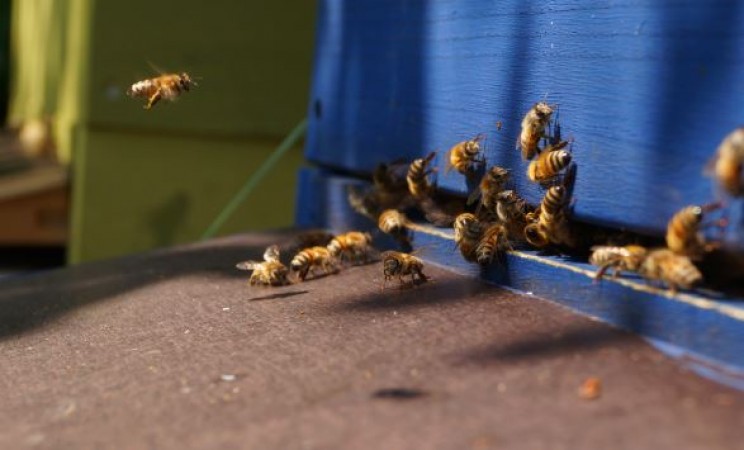
Urban beekeeping has become increasingly popular in recent years as people recognize the importance of bees in our ecosystem and the benefits of having local honey. If you have a rooftop space, starting an urban beekeeping project can be a rewarding and environmentally friendly endeavor. This article will guide you through the process of setting up and maintaining a rooftop beehive, allowing you to contribute to the well-being of pollinators and enjoy the fruits of your labor – delicious honey!
Benefits of Urban Beekeeping
Supporting Pollinators
One of the primary reasons to start an urban beekeeping project is to support declining pollinator populations. Bees play a crucial role in pollinating plants, which leads to the production of fruits, vegetables, and nuts. By providing bees with a safe and nourishing environment, you are contributing to the health of local ecosystems and agricultural productivity.
Harvesting Local Honey
Having your beehive means you can harvest your own honey, which is distinct in flavor and quality from mass-produced honey found in stores. The unique blend of nectars from local flowers gives the honey a taste that reflects the essence of your city or neighborhood.
Positive Impact on the Environment
Urban beekeeping has a positive impact on the environment beyond supporting pollinators. Bees help increase green spaces in urban areas, leading to improved air quality and biodiversity. Additionally, by engaging in sustainable beekeeping practices, you promote environmental consciousness in your community.
Understanding Rooftop Beekeeping
Location Selection
Before setting up your beehive, carefully choose the location on your rooftop. Ensure that the hive receives sufficient sunlight and protection from strong winds. Keep the hive away from areas with high foot traffic to avoid disturbances to the bees and prevent potential stings.
Legal Considerations
Before starting your urban beekeeping project, familiarize yourself with local regulations and zoning laws regarding beekeeping. Some cities have specific rules related to hive placement, distance from property lines, and the number of hives allowed per rooftop.
Safety Precautions
Safety should be a top priority when keeping bees. Invest in appropriate protective gear, including a bee suit, gloves, and a veil. Familiarize yourself with bee behavior and handling techniques to minimize the risk of stings.
Acquiring Beekeeping Equipment
Hives and Frames
Choose a beehive design that suits your space and preferences. Langstroth hives are commonly used and easy to manage. Make sure to have enough frames for brood (bee larvae) and honey storage.
Protective Gear
Invest in a good quality beekeeping suit that covers your entire body. Beekeeping gloves, a hat with a veil, and sturdy boots are also essential to ensure your safety during inspections.
Smoker and Tools
A smoker is used to calm the bees during inspections. Additionally, you'll need tools such as a hive tool for prying open frames and a bee brush for gentle removal of bees from surfaces.
Obtaining Bees
Buying Bees
You can purchase bees from reputable suppliers or local beekeeping associations. Package bees or nucleus colonies are common options for beginners.
Catching Swarms
In some cases, you might have the opportunity to catch a swarm of bees that have naturally split from an established hive. Swarms are generally docile and easy to collect.
Working with Local Beekeepers
Reach out to experienced beekeepers in your area for advice and potential assistance. They can provide valuable insights into local beekeeping practices and help you source bees.
Setting Up the Hive
Assembling the Hive
Follow the manufacturer's instructions to assemble your beehive properly. Ensure that all components fit snugly to prevent drafts and other potential issues.
Installing Bees in the Hive
Introduce the bees to their new home by following the proper procedures. This process should be done with care to minimize stress on the bees.
Caring for Your Bees
Regular Inspections
Perform regular inspections of the hive to ensure the health and productivity of the colony. Check for signs of disease, pests, and sufficient food stores.
Providing Food and Water
In times of nectar scarcity, supplement the bees' diet with sugar syrup. Ensure they have access to a nearby water source as well.
Dealing with Pests and Diseases
Monitor the hive for signs of pests and diseases. If an issue is identified, take appropriate action promptly to prevent it from spreading.
Harvesting Honey and Beeswax
Knowing When to Harvest
Timing is crucial when it comes to harvesting honey. Ensure that the honey frames are capped before extraction.
Extracting Honey
Use a honey extractor to remove honey from the frames without damaging the comb. Filter the honey to remove impurities before storing it in jars.
Processing Beeswax
If you have an excess of beeswax, you can melt it down and use it for various purposes, such as making candles, balms, and cosmetics.
Community Engagement
Educating Others About Beekeeping
Share your knowledge and experiences with friends, family, and neighbors to raise awareness about the importance of bees and urban beekeeping.
Involving Your Community
Invite your community to participate in beekeeping activities. Consider organizing workshops or beekeeping demonstrations to get others involved.
Addressing Concerns and Misconceptions
Be prepared to address concerns or misconceptions people may have about beekeeping, such as bee stings and safety concerns. Educate them on the gentle nature of honeybees and their importance in the ecosystem.
Challenges and Tips
Weather Conditions
Be mindful of weather conditions, as extreme temperatures or sudden weather changes can impact bee activity and hive health.
City Regulations
Stay updated on city regulations and be prepared to adapt your beekeeping practices if necessary to comply with changing rules.
Supporting Other Pollinators
Consider planting a variety of flowers and plants that provide nectar and pollen for other pollinators in addition to honeybees.
Starting an urban beekeeping project on your rooftop is a fulfilling and eco-friendly way to support pollinators and produce your own honey. By following the guidelines provided in this article, you can create a thriving beehive that not only benefits your community but also contributes to the well-being of our planet.
Birthday Special - Wishing the Man of Melodious Voice, Sonu Nigam!